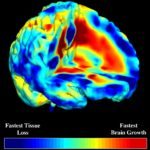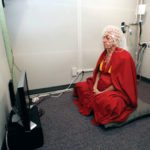This is the third and final post of my inquiry into meditation. In Part I, I spoke about my introduction and my experience with meditation. In Part II, we examined the high achievers who credit meditation with much of their success and we debunked certain myths surrounding meditation with the use of a few experts.
In this Part III, we will dive deep into the 6th myth about meditation – that there is no science behind it. I will also show that although the early science is promising, we should not jump to conclusions. I then share what my take is looking at the balance of the evidence and, finally, how to start very simply if you so desire.
With that said – let’s go on with the chlorophyll….
The Data
Over the last 40-50 years, scientists have been trying to replicate meditation in the lab and either “prove” its benefits or dispel them. In the last 10-20 years, that science has been exponentially increased and impressively ramped up. The advancements in fields like neuroscience have suggested even more tangible benefits than many thought.
Here’s Sam Harris:
“There is now a large literature on the psychological benefits of meditation. Different techniques produce long-lasting changes in attention, emotion, cognition, and pain perception, and these correlate with both structural and functional changes in the brain. This field of research is quickly growing, as is our understanding of self-awareness and related mental phenomena. Given recent advances in neuroimaging technology, we no longer face a practical impediment to investigating spiritual insights in the context of science.”
He continues:
“Cultivating this quality of mind has been shown to reduce pain, anxiety, and depression; improve cognitive function; and even produce changes in gray matter density in regions of the brain related to learning and memory, emotional regulation, and self-awareness.”
OK, we know what Harris has to say – he’s into it. Let’s look elsewhere, including the individual studies he references.
Meditation Grows My Brain?

http://users.loni.usc.edu
In 2010, researchers from Harvard wanted to test the frequently reported, but largely anecdotal, evidence of positive physiological and psychological effects of meditation programs. So they put it to the test.
They took a test group of 16 people who had never mediated before and took Magnetic Resonance Images (MRIs) of their brains. They did the same for a control group of 17 people that had never meditated.
They then had the test group meditate for about 20 minutes per day for eight weeks. The control group just carried on living their lives for 8 weeks. Both groups had MRIs done following the eight-week period as well.
Now – 8 weeks – I mean that is nothing – not even a semester. It took Ben Affleck longer than that to learn surveys. What could happen in eight weeks?!
I’ll tell you what – A little thing called brain growth. Yup. The test group showed increased density of gray matter in areas of the brain related to learning, memory and self-awareness. The control group – nada.
From the abstract of the study:
“The results suggest that participation in MBSR [a meditation program] is associated with changes in gray matter concentration in brain regions involved in learning and memory processes, emotion regulation, self-referential processing, and perspective taking.” (Parenthetical added).
But wait a second?! I thought brain tissue was fixed. I thought neurons are the one thing you cannot get back?
Well, that was the common thought up to about the 1990s. At that point, the scientific community started to take concepts such as neuroplacticity (structural changes in brain over one’s life) and adult neurogenesis (birth of new neurons in adulthood) seriously.
It is now widely believed that significant changes in neural pathways, in brain structures, and birth of new neurons occur over ones lifetime. What’s more, these changes are impacted heavily by the choices we make. See here for an interesting summary.
More Science, More Experts.
Now, in Part II, we met the first three experts: Psychologist, Jon Haidt, former Monk and CEO of Headspace, Andy Puddicombe, and, Sam Harris, author, philosopher, meditator and neuroscientist. Let’s meet a few more.
The feature article in a 2014 edition of the Scientific American is entitled, “Mind of the Meditator.” This article seeks to summarize the state of the science behind meditation at that point.

http://theviralmedialab.org
The article is written by a powerhouse lineup of meditation experts: Expert #4, Matthew Ricard, cellular biologist turned Buddhist monk; Expert # 5 – Antoine Lutz a leading french researcher in neurobiology, and Expert #6 – Richard J. Davidson, Director of the Waksman Laboratory for Brain Imaging and Behavior.
In short, these guys know their shhhi-nto.
According to the article, the bulk of meditation research seems to show significant and wide-ranging benefits. The benefits discussed cover everything from the more general – a sense of calmness and well-being – to the more science-y – increased volume of brain tissue, faster reaction to stimuli, and less neurological reaction to stress.
From the article:
“The evidence amassed from this research has begun to show that meditation can rewire brain circuits to produce salutary effects not just on the mind and the brain but on the entire body.”
Neuroimaging, for instance, has shown significant differences in experienced meditators:
“attention-related brain regions compared to novices. Advanced meditators appear to acquire a level of skill that enables them to achieve a focused state of mind with less effort. These skills resemble those of expert musicians and athletes capable of immersing themselves in the ‘flow’ of their performances with a minimal sense of effortful control.”
Other studies indicated increased attention span, better handle anxiety, quiet physiological immmune responses like inflammation, better pain tolerance, and enhanced ability to share feelings of others without becoming emotionally overwhelmed.

http://www.nature.com
The article further specifies that different versions of meditation tend to access different parts of the brain and thus produce different combinations of the above benefits. This isn’t so surprising when you consider recent neuroscience research that suggests different activities access different parts of the brain. For example, writing access a different part of the brain than drawing.
Towards the end of the article, the authors indicate that we may have just scratched the surface of the benefits conferred by long term meditation. While the authors admit that we still require more research, meaningful physiological changes in the body seem to follow the practice.
The initial ( and albeit smaller / less replicated) studies showed increased learning and perceptive capabilities by way of gamma oscillations. Other studies have shown decreased volume of amygdala (the fear center of the brain) and meditations positive effect on the brain’s telomeres — the caps on chromosomes that ensure the stability of DNA. (Studies show decrease in integrity and amount of telomeres as one ages).
Now you might say: “Hold the phone… Are you telling me that everyone agrees on this?!” Ah, you caught me. Let’s look at the dissent – shall we?
The Dissent: The Limitations and Shortcomings of Mediation
In my “According to The Experts” articles – the goal is to present the full argument from both sides and then make a decision from the best information possible – not just half of the best information possible. To do this, I had to, if painfully, actively seek out disconfirming evidence of my new found love: meditation.
Up until that point, I had only been asking: “what data do we have that supports meditation?” But as author of the

http://thearabdailynews.com
seminal book, The Structure of Scientific Revolutions, Thomas Kuhn wrote: “The answers you get depend on the questions you ask.”
The term “dissent” is used in the legal world. Typically, when a legal case is decided on by a collection of judges, the majority wins. The majority will then write an “opinion” explaining the facts of the case, the law that applies and why the decided what they did. In the event that one or more judges did not agree with the majority viewpoint, they will write a “dissent” explaining why they do not agree.
This is not a new strategy, nor is it specific to law. It is a strategy on which the scientific method is supposed to be ground. A hypothesis is tested, the results are reported, and in subsequent experiments, the original scientist, or his contemporaries, seek out circumstances when the claim is not true.
So I had to start asking the opposite questions such as: what is bad about meditation? What science do we have on the science saying there is something good. Is that good science? Does anyone disagree?
An idea that goes hand in hand with this notion of active open-mindedness is the idea of “falsifiability.” This was an

Karl Popper
idea popularized by Karl Popper. The idea is for a view to be scientifically valid it must be “possible to conceive of an observation or an argument which negates the statement in question.” That is, it must be inherent within the viewpoint that it can be proven wrong.
For instance, some may say that the existence of God cannot be falsified. If that is true, then, according to the theory, the viewpoint that God exists cannot be a scientifically valid position.
For many years – 1000s in fact – mediation was very hard to falisify. Mediation is a long-time practice but only recently do we have legitimate research in the scientific sphere.
The past practices of the Buddha and followers were not graded scientifically. That is they were not measured, tested, controlled, etc. You do something and if it makes you feel better and you add an authority to it – there is a good chance of it continuing.
In his best-selling book, The Power of Habit, journalist Charles Duhigg discusses the impact of habits on our lives and what factors contribute to a new habit becoming ingrained in the individual. Duhigg notes that perhaps the strongest contributing factors are (i) if the new habit is being adopted in the context of a group and, perhaps even stronger, (ii) whether there is some higher belief associated with the habit.
Having those beliefs and that support group has been associated in many circles with a higher sense of purpose, well-being, fulfillment and happiness.
This would lead one to wonder – is it the meditation itself causing the benefits? Or is it the group and the belief associated with it?
A Study of Studies
Johns Hopkins researcher, Madhav Goyal, and colleagues wanted to find out if all of the new science backing the benefits of meditation practice were legit or if they were unsound science. To find this out they conducted a “meta-

http://i.imgur.com/N3Zzp.jpg
study” (a study of studies), originally considering 18,000 meditation trials.
Meta studies look at existing research on a topic and evaluate the criteria and standards to which those individual trials were held. So if 100 studies are saying meditation is good, the meta-studier wants to say- “ok, how many of these studies should be considered scientifically valid or were held to a reasonable amount of scientific rigor such that we should put our faith in them.”
Right at the outset, they realized there was a lot of fluff. Out of the 18,000 trials, only 47 of the survived after Goyal pruned the bunch via strict evaluative factors. Only 47! That is less than ½ percent! For those of you that have a particularly sturdy attention span and a lot of time – read the full article is here.
From the study (emphasis added):
“In our efficacy analysis (Figure 1A), we found low evidence of no effect or insufficient evidence that mantra meditation programs had an effect on any of the psychological stress and well-being outcomes we examined. Mindfulness meditation programs had moderate evidence of improved anxiety (ES, 0.38 [95% CI, 0.12- 0.64] at 8 weeks and 0.22 [0.02-0.43] at 3-6 months), depression (0.30 [0.00-0.59] at 8 weeks and 0.23 [0.05-0.42] at 3-6 months), and pain (0.33 [0.03-0.62]) and low evidence of improved stress/distress and mental health–related quality of life.We found low evidence of no effect or insufficient evidence of an effect of meditation programs on positive mood, attention, sleep, and weight. We also found insufficient evidence that meditation programs had an effect on health-related behaviors affected by stress, including substance use and sleep.”
The second piece that caught my eye here was that they found no evidence that mediation was more effective then any other “good” activity.
“our comparative effectiveness analyses (Figure 1B), we found low evidence of no effect or insufficient evidence that any of the meditation programs were more effective than exercise, progressive muscle relaxation, cognitive-behavioral group therapy, or other specific comparators in changing any outcomes of interest”
If you live in Cali, and are an avid Transcendental Mediation fan or a fan of another “mantra” meditation – the following expert is not a great finding:
“First, very few mantra meditation programs met our inclusion criteria. This lack significantly limited our ability to draw inferences about the effects of mantra meditation programs on psychological stress–related outcomes, which did not change when we evaluated transcendental meditation separately from other mantra training.”
Now, before you Hollywood types get all dramatic on me, this does not necessarily mean that TM is not a valid form of meditation or that it does not have the benefits of meditation. This note can be read in two ways.
First, you may read this as saying: “we don’t have enough information.” This would allow you to say this study has nothing to say whatsoever about TM – and that you can move on with your life, TM dreams intact. It may, after all, just mean that the studies being done on TM are not effective — not that TM is not effective. Valid reading.
The second perspective is a bit more hostile. The only studies not included were the ones who met certain rigorous criteria – such as chance of bias, no control group, etc. So the studies being done on TM are not that great and we can only rely on what Hollywood stars say about it. Which is basically as good as relying on them for opinions on Scientology. (Not that there’s anything wrong with that).
The Money Motivation
Another problem with meditation that has been flagged is a problem of motivation. In this case, perhaps THE motivation in a capitalist society: money. The meditation industry is now turning into a behemoth and is now said to

https://fortunedotcom
be worth around a cool billion. [“It’s all I’ve got…on me…”]
One of our experts, Andy P, the founder of Headspace, a mediation app that has had a reported six million downloads, seems to have been implicated in such a way by a recent NY Times article by David Gelles:
“And therein lies one of the inherent tensions with a for-profit meditation company: In the rush to expand a business, it’s easy to misrepresent, oversell or exaggerate the benefits of a product, especially something as mercurial as mindfulness.
In particular, some claim that Headspace has gone too far in trying to appeal to those in fragile emotional states by offering meditation courses devised to treat depression.
“The problem I have with Headspace is the way they’ve expanded their content to target vulnerable populations,” said Zindel Segal, a professor of psychology at the University of Toronto, and the co-developer of Mindfulness Based Cognitive Therapy, a meditation-based treatment for depression.
“They have no research that validates the claims they are making in this area,” Professor Segal said, “yet their business model requires that they constantly grow their user base.”
The co-founder of Headspace responded in a somewhat odd way considering the way they taught the science on the website and book:
“We are just trying to put stuff out there that will help people,” he said. If meditation and mindfulness can cheer someone up, is a peer-reviewed study really necessary? …I don’t think Western science has a monopoly on the human condition.”
So, Headspace boy, is there science behind it.. or not?
The “Dark Side” of Meditation

https://upload.wikimedia.org
Dr. Willoughby Britton is our final meditation expert. Britton is an assistant professor of psychiatry and human behavior at the Brown University Medical School. Besides having an A+ name, she also has a very interesting expertise. She helps people get through or come back from the so called “dark side” of meditation.
Whaaa???! There’s a dark side??!
Apparently, yes.
This Atlantic article describes the problem as Britton sees it:
“We have a lot of positive data [on meditation],” she says, “but no one has been asking if there are any potential difficulties or adverse effects, and whether there are some practices that may be better or worse-suited [for] some people over others. Ironically,” Britton adds, “the main delivery system for Buddhist meditation in America is actually medicine and science, not Buddhism.”
She is very concerned with this American, or “Westernized” meditation, in that it attach material or curative goals to mindfulness rather than the deep and lifelong perspective and practice from which it was borne.
This Time article one of the many that point to the apparent benefits to Americans and coaches them in terms of productivity and stress reductions because, as Britton notes, “that’s what Americans value.”
Apparently, Britton’s concerns were borne out of experiences with clients, and they are not just limited to her own. The article sights many other well-known teachers who have come across similar experiences.
She is well aware of the benefits of meditation, being a practitioner herself, but her experience has proven that it is not all good – and that the bad can be very bad. Therefore, she understands the resistance to such data by its proponents. However, she notes:
“what about when meditation plays a role in creating an experience that then leads to a breakup, a psychotic break, or an inability to focus at work?”
The article concludes in a crossroads-type fashion:
“I understand the resistance,” says Britton, in response to critics who have attempted to silence or dismiss her work. “There are parts of me that just want meditation to be all good. I find myself in denial sometimes, where I just want to forget all that I’ve learned and go back to being happy about mindfulness and promoting it, but then I get another phone call and meet someone who’s in distress, and I see the devastation in their eyes, and I can’t deny that this is happening. As much as I want to investigate and promote contemplative practices and contribute to the well-being of humanity through that, I feel a deeper commitment to what’s actually true.”
***
BALANCING THE EVIDENCE

http://www.nature.com
When considering the balance of the evidence, I have to admit, I am more skeptical then when I first conceived of this article.
The meta-study was great for me to see on two levels.
First, it is a good sign that the scientific method is alive and well in this field. The entire point and idea of a meta-study is ensuring just that.
This is especially true if the results are some thing we want to believe. I mean, 10 minutes per day, no cost, no side effects. That seems ideal for the benefits cited. So we should be sure it is studied rigorously with each individual trial keeping to a high standard and low chance of error or bias.
Secondly, this has shown me that I am specifically susceptible to confirmation bias. it is a good reminder of how easy it is to succumb to this pitfall. It was really only when I began to seek out disconfirming evidence that I was able to see both sides.
We must be mindful of what has yet to be proven and the shortcomings of our own evidence. Especially if we want those results or, possibly worse, if we are being paid based on them.
Even the authors of the optimistic, pro-meditation 2014 Scientific American article concede:
“More studies using well-defined, randomized controlled trials are needed to isolate meditation-related effects from other psychological factors that can influence the outcome of a study… Further work is needed to understand the possible negative side effects of meditation, the desirable length of a given practice session and the way to tailor it to a person’s specific needs.”
Additionally, the issues involving capitalistic motivation and the “dark side” have certainly caused me to pause and reflect. They also will serve to sober me to the realities of meditation.
That is, the experiences aren’t all good, and the research is funded by someone – and those someones may have other interests such as financial or even just being a hero. For as Upton Sinclair is famous for saying: “it is difficult to get a man to understand something when his salary depends on his not understanding it.”
But still, even with these cautionary pieces of evidence – there seems to exist decent evidence of a comparative effect to exercise, anti-depressants and cognitive therapy.
The difference? No cost and no side effect.
Indeed, the researchers in the meta-study point this out in various areas:
“These small effects are comparable with what would be expected from the use of an antidepressant in a primary care population but without the associated toxicities.”
That seems like a good place to start.
***
My Current Conclusion: YES to Mediation –for now.
Considering the evidence, I am still going to meditate until I see a compelling reason not to or a better way to spend that 10-60 minutes per day. And here is why:
- High Upside. We are very early in the research – especially on the neuroscience end. But most of the research is suggesting very interesting possibilities. And, even setting aside the science – there seems to be a disproportionate amount of successful people that meditate. Not necessarily conclusive of anything, but it’s probably a good sign.
- Low Downside. Perhaps more importantly, there seems to be very low downside to sitting and concentrating on your breathe for 10-20 minutes per day. It costs nothing, or a very limited amount, and the side effects are very limited. The occurrence of the “dark side” patients are extremely infrequent and the data is blurry on whether or not this stems from some preexisting issue. If you have a preexisting medical or clinical physical or psychological issue – I would consult a professional. For instance, I think having strong legs are important – but if you have a hamstring injury – I would not engage.
- Having A Practice. Many meditators have sung its praises, not based on the consequential benefits, but just because of the practice itself. Doing it everyday, finding a moment of quiet. In fact, Charles Duhigg points to research that might describe meditation as a “keystone habit.” That is, a unique set of habits that seems to set off a chain reaction of other good habits. For example, people that go to the gym in the morning or make their bed in the morning have been shown to be more likely to eat healthily, be productive at work, etc. Meditation seems to fit that mold.
- “As good As exercise.” The researchers of that meta-study concluded that this was “no better than exercise.” Even if we accept that on its face – isn’t exercise pretty good? What if I reversed their words and just said: “meditation – it is as good as exercise.” Wouldn’t everyone be meditating? So I can just do something for 20 minutes, for free, no injuries, sitting on my couch. Sounds like a dream.
Lastly, and Most Importantly – Meditation is, at the very least, a philosophy. It is an outlook and a way to operate in your world – a world that invariably connects with others. The idea is to gain insight and awareness into reality – yours and the collective. Recognizing the difference between the mind’s thoughts and your identity.
In fact, in the above meta study, Goyal and team make this same point. They point out one possibility for the relatively underwhelming results of their study is a matter of perspective:
“Historically, meditation was not conceptualized as an expedient therapy for health problems. Meditation was a skill or state one learned and practiced over time to increase one’s awareness and through this awareness to gain insight and understanding into the various subtleties of one’s existence. Training the mind in awareness, in nonjudgmental states, or in the ability to become completely free of thoughts or other activity are daunting accomplishments. The interest in meditation that has grown during the past 30 years in Western cultures comes from Eastern traditions that emphasize lifelong growth. The translation of these traditions into research studies remains challenging. Long-term trials may be optimal to examine the effect of meditation on many health outcomes, such as those trials that have evaluated mortality.”
Indeed, the philosophy is not limited to just the Far East. The stoics seemed to have a similar mindset. One of the most influential would have been Emperor Marcus Aurelius (of Gladiator fame). In his meditations he urges the reader (himself – as this was originally just his diary) to remember that it starts and ends in our minds.
This mindset is reminiscent of the famous Hamlet quote:
“for there is nothing either good or bad, but thinking makes it so.”
Here’s the Emperor:
“Men seek retreats for themselves, houses in the country, sea-shores, and mountains; and thou too art wont to desire such things very much. But this is altogether a mark of the most common sort of men, for it is in thy power whenever thou shalt choose to retire into thyself. For nowhere either with more quiet or more freedom from trouble does a man retire than into his own soul, particularly when he has within him such thoughts that by looking into them he is immediately in perfect tranquility; and I affirm that tranquility is nothing else than the good ordering of the mind. Constantly then give to thyself this retreat, and renew thyself; and let thy principles be brief and fundamental, which, as soon as thou shalt recur to them, will be sufficient to cleanse the soul completely, and to send thee back free from all discontent with the things to which thou returnest”
OK, Ok. So people in a lab can do it and life time yogi’s but what about little old me??
Enter HeadSpace.
***
HOW TO START, SIMPLY.
Research shows that habits are best formed in small chunks, using specific goals (S.M.A.R.T) paired with a long view. The long view should come from the idea that year by year we will become more and more mindful, aware, and

https://pedroportoalegre
sensitive to changes and thoughts within ourselves and others. More and more capable of filtering out imagination and seeing reality in the present moment, and facing it.
Earlier in this post we met Andy Puddicombe, the monk-turned-meditation app founder. For people looking to start meditation in a small and easy way – Puddicombe has created an app that is so easy, even a Gieco commercial can beat it to death.
[For those that are anti-trend – there are also a handful of other reputable apps that have sprung up. Once such app is Calm.]Though there are many meditations you can find and try – I started with HeadSpace (before it became mainstream, of course), so that is what I’ll recommend. Try the “Take 10” – it is ten days absolutely free – just ten minutes per day. Very simple.
Keep in mind – before you head off to that “Take10”: you are not going to be good at this at the start. And there really is no “good.” There is only slow and steady improvement. And it will show up sooner than you think; you will see it’s application everywhere.
Give it a shot. You’ll thank yourself. And, as always, thanks for reading :).
Besos.
[For more on my meditation experience – click here]



One Comment on “Meditation Part III: Data, Dissent, and Conclusion”
For me, I bring a sense of calmness and peace through the practice of meditation. I also love guided meditation because I can relax into the soothing voice of the guider(is that a word?). It’s easier for me to use this venue. When I do my own meditation, I seem to keep trying to come back to stillness.
I’m learning so much about you, Justin! You are amazing!
Mom